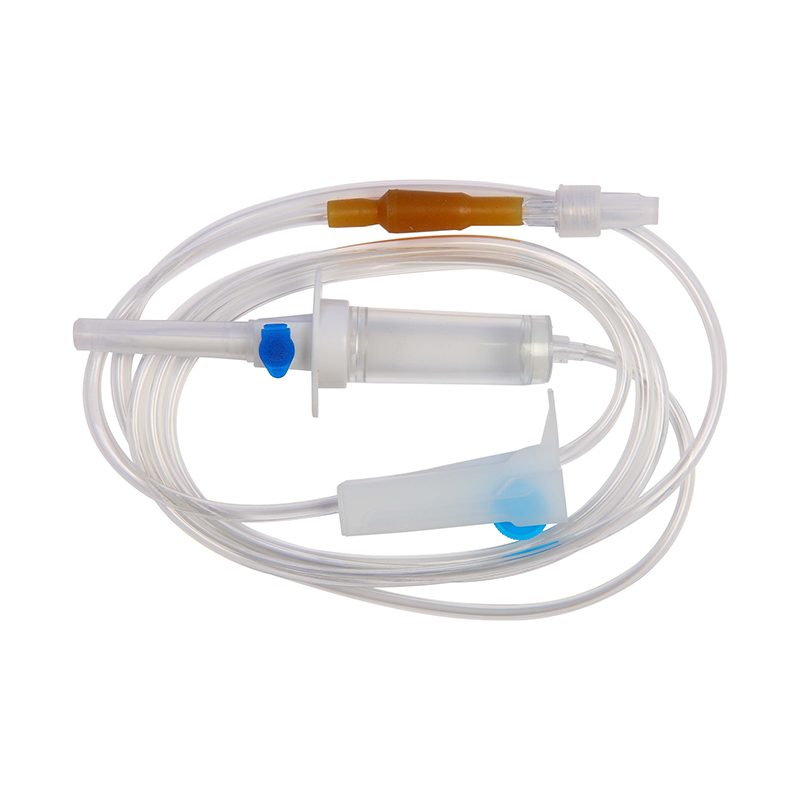During medical procedures, the use of an IV infusion set is critical for injecting fluids, medications, or nutrients directly into the bloodstream. Understanding the different types and components of IV sets is critical for healthcare professionals to ensure that these substances are delivered correctly and safely to patients.
IV infusion set components
Regardless of type, all IV infusion sets have common components that are critical to their proper function. These components include the following:
1. Drip Chamber: A drip chamber is a clear chamber located near an IV bag that allows healthcare professionals to monitor the flow of fluid into the line and adjust the rate of infusion.
2. Tubing: Tubing is the long, flexible tube that connects an IV bag or syringe to a patient’s vein. It is responsible for delivering fluids or medications from source to patient.
3. Needle/catheter: The needle or catheter is the part of an IV set that is inserted into a patient’s vein to deliver fluids or medications. It is critical that this component is sterilized and inserted correctly to prevent infection or injury to the patient.
4. Injection Port: An injection port is a small self-sealing membrane located on the tubing that allows additional medications or fluids to be administered without interrupting the main infusion.
5. Flow Regulator: A flow regulator is a dial or clamp used to control the flow rate of fluid in a gravity infusion set or to connect tubing to an infusion pump in a pump infusion set.
Types of IV infusion sets
There are several types of IV infusion sets on the market, each designed to meet specific medical needs and requirements. The most common types of IV infusion sets include gravity sets, pump sets, and syringe sets.
Gravity infusion sets are the most basic and widely used type of intravenous infusion sets. They rely on gravity to regulate the flow of fluid into the patient’s bloodstream. These devices consist of a drip chamber, tubing, and a needle or catheter that is inserted into the patient’s vein.
Pump infusion sets, on the other hand, are used in conjunction with an infusion pump to deliver precise amounts of fluid or medication at a controlled rate. These devices are typically used in critical care settings or for patients requiring continuous infusion therapy.
Syringe infusion sets are designed to administer small amounts of fluid or medication using a syringe as the delivery system. These devices are typically used for intermittent or one-time infusions, such as administering antibiotics or painkillers.
It is important for healthcare professionals to carefully select the appropriate type of IV infusion set and ensure that all components are in proper working order before injecting any fluid or medication into a patient. This includes regular inspections, following manufacturer guidelines, and adhering to infection control best practices.
In conclusion, the use of IV infusion sets is an important part of medical care, allowing the safe and effective delivery of fluids, medications, and nutrients to patients. Understanding the different types and components of IV infusion sets is critical for healthcare professionals to provide the best care for their patients. Healthcare professionals can ensure that IV treatments are safe and effective by choosing the right type and ensuring that all components are functioning properly.
Post time: Feb-26-2024








